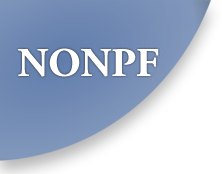Transitioning an AG-ACNP Program from Bricks and Mortar to Online Delivery: Cutting Edge Innovations in a Rapidly High Stakes Discipline
Enrollment in graduate nursing programs is increasing annually in response to the growing demand for nurses to serve as faculty, researchers and specialty and primary care providers (AACN, 2009). Changes in healthcare reform are placing APRN’s in high demand to provide essential health care services. The role of Adult Gerontology-Acute Care Nurse Practitioner’s (AG-ACNP) is expanding and job opportunities are increasing due to geriatric population growth, increasing incidence of chronic diseases, a shortage of board certified critical care physicians, cutbacks in residency and fellowship hours and research studies demonstrating impressive outcomes of AG-ACNP care (Moote, 2011). Online AG-ACNP programs are one way to meet the need for this growing specialty.
Although often referred to as a teaching mode or delivery method, ODL is a distinct field of education with its own pedagogical philosophy (Keegan, 1986) and developing a program for instruction at a distance is a complex and multi-layered process. Faculty must be knowledgeable in content and instructional design as well as facilitation strategies and technology delivery platforms. Nurse practitioner programs include the added challenge of coordinating quality nationwide clinical placements and objectively assessing student ability to meet clinical competencies. Characteristics of a successful ODL program include a strategic plan for growth and infrastructure to support the needs of faculty and students. A university’s AG-ACNP program launched an online program in 2012 and in the past two years, the program has grown 386% while maintaining high quality outcomes. This symposium presentation will outline key lessons learned and strategies for success in transitioning a bricks and mortar AG-ACNP program to online, highlighting innovative concepts for curriculum, strategies for securing clinical placements nationwide, the importance of a faculty mentorship program and objective evaluation methods for assessing core AG-ACNP competencies.

